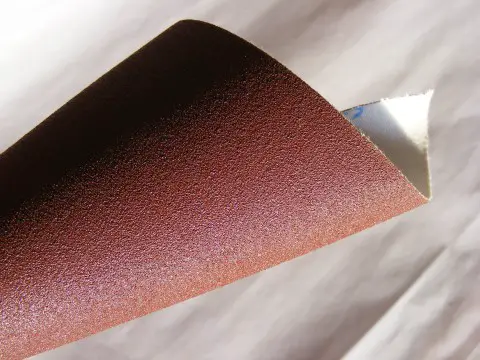Understanding how to use sandpaper is essential for anyone looking to finish or refurbish various materials like wood, metal, or plastic. This guide will provide you with detailed instructions, so even if you’ve never picked up a piece of sandpaper before, you’ll know exactly what to do.

Emilian Robert Vicol from Com. Balanesti, Romania, CC BY 2.0 https://creativecommons.org/licenses/by/2.0, via Wikimedia Commons
Introduction: What is Sandpaper?
Sandpaper is a tool used to smooth surfaces through abrasion. It consists of paper or cloth coated with a type of mineral grit. The grit’s coarseness or fineness determines how much material is removed. Now, let’s learn how to use sandpaper effectively.
Step 1: Choose the Right Grit
You’ll need to choose the correct grit for the job. Here’s how:
- Coarse Grit (40-60): For removing paint or heavy material.
- Medium Grit (80-120): For initial sanding and smoothing.
- Fine Grit (150-180): For final sanding and polishing.
Step 2: Prepare the Surface
Clean the surface thoroughly, removing any debris or dust. This ensures a smooth finish and prolongs the life of the sandpaper.
For more articles on sanding, click here: Sanding: Your Full-Circle Guide to Smooth Mastery
Step 3: Using Sandpaper by Hand
If you are using sandpaper by hand, follow these steps:
- Wrap the sandpaper around a sanding block or hold it flat in your hand.
- Apply even pressure and sand in the direction of the grain, especially on wood.
- Keep checking the surface and switch to finer grit as needed.
Step 4: Using Sandpaper with a Power Sander
If you are using a power sander, make sure to read the instruction manual, and follow these steps:
- Attach the sandpaper to the sander as per the machine’s instructions.
- Start with a low speed and increase as necessary.
- Move the sander evenly across the surface.
Common Errors and Solutions
Error: Over-sanding
Over-sanding can damage the material. Solution: Always start with a coarser grit and move to finer grits gradually.
Error: Sanding Against the Grain
Sanding against the grain on wood can cause scratches. Solution: Always sand in the direction of the grain.
Learning how to use sandpaper can be a rewarding skill. With patience and practice, you’ll achieve a professional finish every time.
